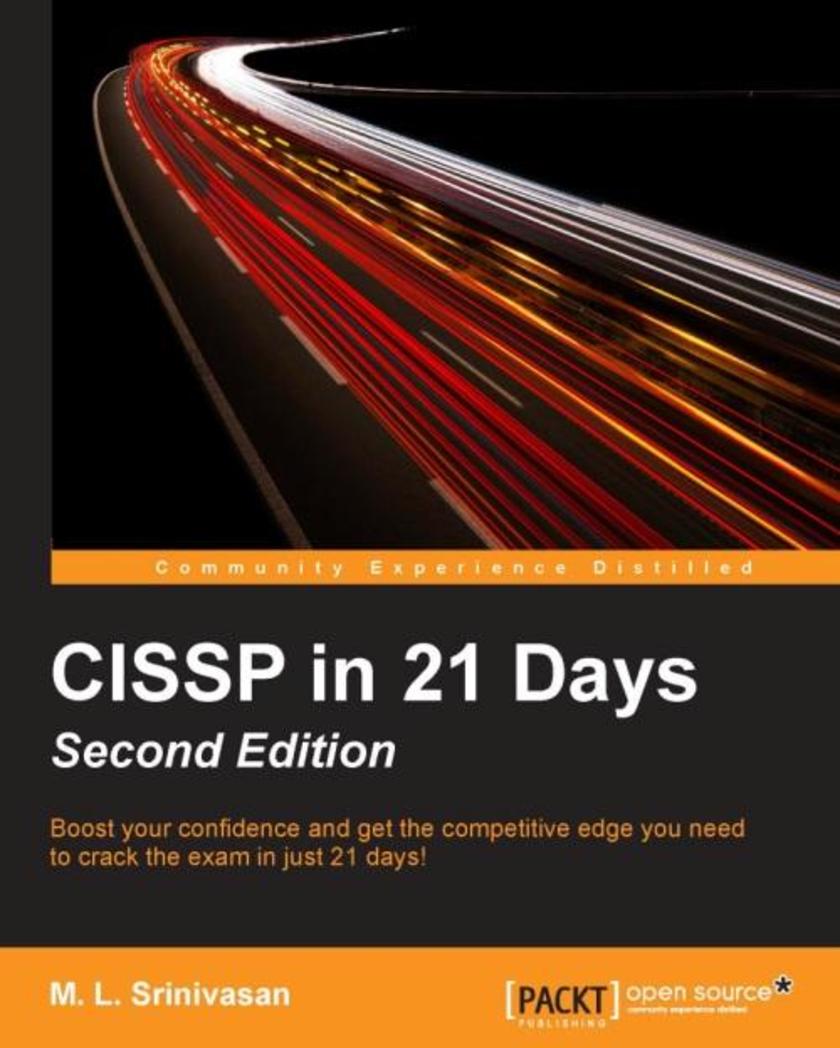
CISSP in 21 Days - Second Edition
¥80.65
Boost your confidence and get the competitive edge you need to crack the exam in just 21 days! About This Book Day-by-day plan to study and assimilate core concepts from CISSP CBK Revise and take a mock test at the end of every four chapters A systematic study and revision of myriad concepts to help you crack the CISSP examination Who This Book Is For If you are a Networking professional aspiring to take the CISSP examination and obtain the coveted CISSP certification (considered to be the Gold Standard in Information Security personal certification), then this is the book you want. This book assumes that you already have sufficient knowledge in all 10 domains of the CISSP CBK by way of work experience and knowledge gained from other study books. What You Will Learn Review Exam Cram and Practice review questions to reinforce the required concepts Follow the day–by-day plan to revise important concepts a month before the CISSPexam Boost your time management for the exam by attempting the mock question paper Develop a structured study plan for all 10 CISSPdomains Build your understanding of myriad concepts in the Information Security domain Practice the full-blown mock test to evaluate your knowledge and exam preparation In Detail Certified Information Systems Security Professional (CISSP) is an internationally recognized and coveted qualification. Success in this respected exam opens the door to your dream job as a security expert with an eye-catching salary. But passing the final exam is challenging. Every year a lot of candidates do not prepare sufficiently for the examination, and fail at the final stage. This happens when they cover everything but do not revise properly and hence lack confidence. This simple yet informative book will take you through the final weeks before the exam with a day-by-day plan covering all of the exam topics. It will build your confidence and enable you to crack the Gold Standard exam, knowing that you have done all you can to prepare for the big day. This book provides concise explanations of important concepts in all 10 domains of the CISSP Common Body of Knowledge (CBK). Starting with Confidentiality, Integrity, and Availability, you will focus on classifying information and supporting assets. You will understand data handling requirements for sensitive information before gradually moving on to using secure design principles while implementing and managing engineering processes. You will understand the application of cryptography in communication security and prevent or mitigate strategies for network attacks. You will also learn security control requirements and how to assess their effectiveness. Finally, you will explore advanced topics such as automated and manual test result analysis and reporting methods. A complete mock test is included at the end to evaluate whether you're ready for the exam. This book is not a replacement for full study guides; instead, it builds on and reemphasizes concepts learned from them. Style and approach There are many overlapping concepts that are applicable to more than one security domain in the CISSP exam. Hence, the eight security domains are aligned in a logical order so as to cover the concepts in the most appropriate sequence in this guide. Each chapter provides an illustration in the form of a flow diagram at the start to supply an overall view of the concepts covered in that chapter. This will facilitate a bird's-eye view of the chapter contents and the core security concepts covered. You can refer to this book throughout while preparing for the test or most importantly systematically revise the eight domains on a day-by-day basis up to one month before the exam. Hence the chapters are divided into 21 convenient days.
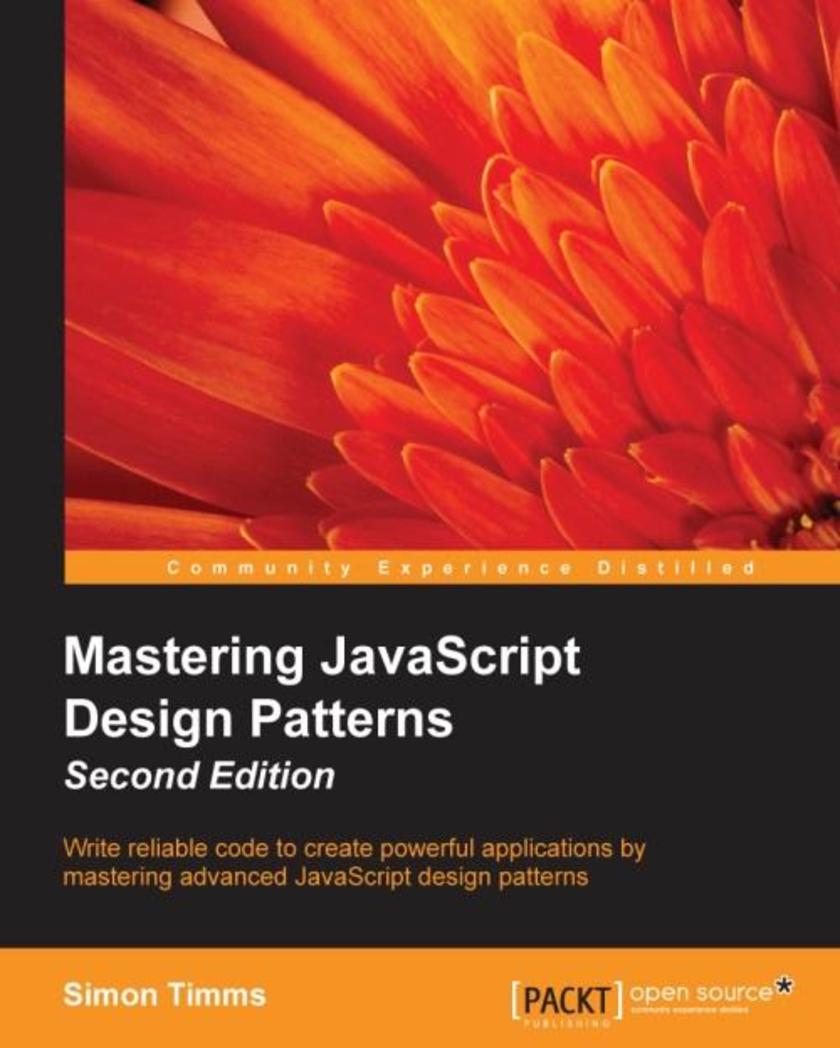
Mastering JavaScript Design Patterns - Second Edition
¥71.93
Write reliable code to create powerful applications by mastering advanced JavaScript design patterns About This Book Learn how to use tried and true software design methodologies to enhance your JavaScript code Discover robust JavaScript implementations of classic and advanced design patterns Packed with easy-to-follow examples that can be used to create reusable code and extensible designs Who This Book Is For This book is ideal for JavaScript developers who want to gain expertise in object-oriented programming with JavaScript and the new capabilities of ES-2015 to improve their web development skills and build professional-quality web applications. What You Will Learn Harness the power of patterns for tasks ranging from application building to code testing Rethink and revitalize your code with the use of functional patterns Improve the way you organize your code Build large-scale apps seamlessly with the help of reactive patterns Identify the best use cases for microservices Get to grips with creational, behavioral, and structural design patterns Explore advanced design patterns including dependency injection In Detail With the recent release of ES-2015, there are several new object-oriented features and functions introduced in JavaScript. These new features enhance the capabilities of JavaScript to utilize design patterns and software design methodologies to write powerful code. Through this book, you will explore how design patterns can help you improve and organize your JavaScript code. You’ll get to grips with creational, structural and behavioral patterns as you discover how to put them to work in different scenarios. Then, you'll get a deeper look at patterns used in functional programming, as well as model view patterns and patterns to build web applications. This updated edition will also delve into reactive design patterns and microservices as they are a growing phenomenon in the world of web development. You will also find patterns to improve the testability of your code using mock objects, mocking frameworks, and monkey patching. We’ll also show you some advanced patterns including dependency injection and live post processing. By the end of the book, you'll be saved of a lot of trial and error and developmental headaches, and you will be on the road to becoming a JavaScript expert. Style and approach Packed with several real-world use cases, this book shows you through step-by-step instructions how to implement the advanced object-oriented programming features to build sophisticated web applications that promote scalability and reusability.
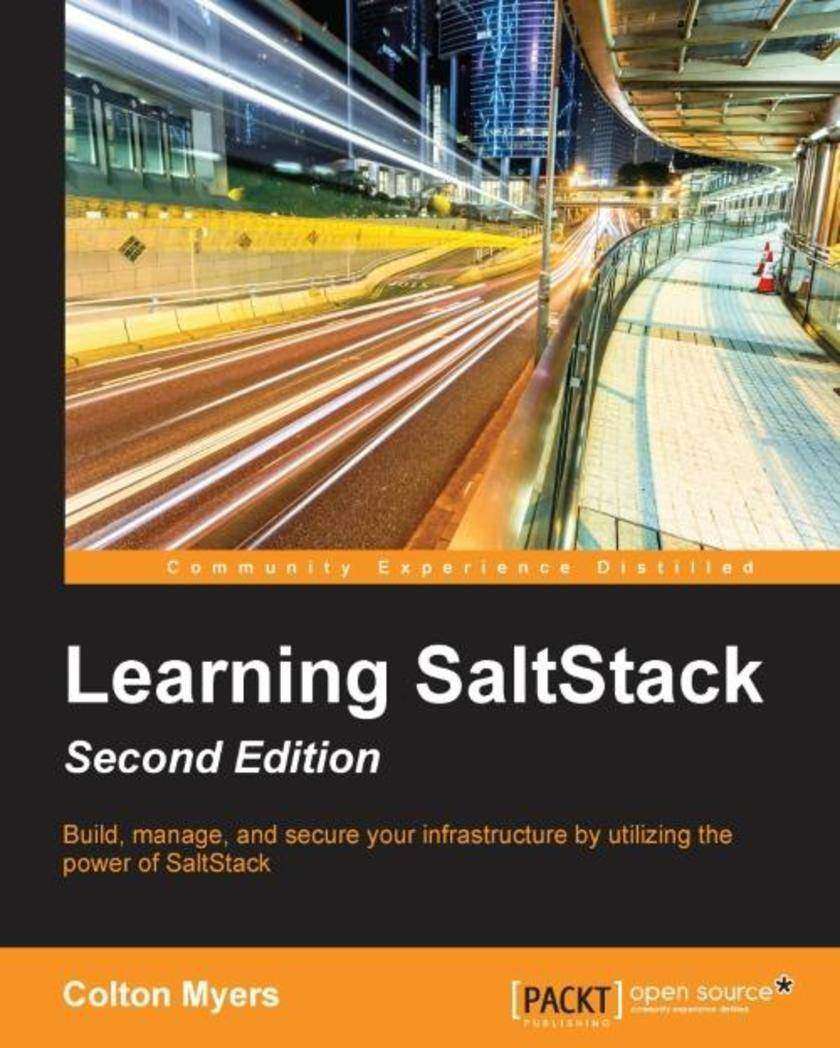
Learning SaltStack - Second Edition
¥63.21
Build, manage, and secure your infrastructure by utilizing the power of SaltStack About This Book First book in the market to incorporate all the latest features of SaltStack. Leverage the power of SaltStack for building, managing and securing your infrastructure. Effectively use commands and control the state of your infrastructure in a jiffy. Who This Book Is For This book is aimed at System Administrators who are looking forward to manage their infrastructure using SaltStack with no prior knowledge about it. What You Will Learn Install Salt on your servers Run commands on all or some of your minions instantly from a central managing server Write custom Salt modules to handle your infrastructure’s unique needs Define the state of your infrastructure and use Salt to enforce that state. Create platform-agnostic state definitions for greater flexibility and power Manage virtual servers on public or private clouds using Salt Cloud Use the event system in Salt to create a reactive and self-healing infrastructure In Detail SaltStack is one of the best infrastructure management platforms available. It provides powerful tools for defining and enforcing the state of your infrastructure in a clear, concise way. With this book learn how to use these tools for your own infrastructure by understanding the core pieces of Salt. In this book we will take you from the initial installation of Salt, through running their first commands, and then talk about extending Salt for individual use cases. From there you will explore the state system inside of Salt, learning to define the desired state of our infrastructure in such a way that Salt can enforce that state with a single command. Finally, you will learn about some of the additional tools that salt provides, including salt-cloud, the reactor, and the event system. We?ll finish by exploring how to get involved with salt and what?s new in the salt community. Finally, by the end of the book, you'll be able to build a reliable, scalable, secure, high-performance infrastructure and fully utilize the power of cloud computing. Style and approach This will be a comprehensive guide on SaltStack along with installation and setting up of Salt on couple of platforms. Then enlightening the readers about remote execution system and configuration management system and ending with concepts of security and best practices.

Magento Extensions Development
¥71.93
Design, build, and maintain a powerful, secure, and complete extension for Magento 2, the world’s favorite e-commerce platform About This Book Deploy a complete real-world extension step by step Construct your extension with the best and most up-to-date development methods Learn about team working and code sharing Who This Book Is For If you want to write a specific customization or a large new and full-featured extension on Magento 2, this book is intended for you. You must be an intermediate to professional-level developer in PHP to appreciate this book. What You Will Learn Build a fully-functional complex extension to add new functionality to Magento Register your code with GIT and work with your team Write new layouts and templates Set up a fully configurable grid and forms in the backend Create code unit tests and run them through TDD Propose localized contents Develop optimized extensions for a high-load environment Publish extensions on the Magento Connect Marketplace In Detail Magento has been revealed as the best and the most popular open source e-commerce platform in the world, with about 250k+ online stores. Magento 2 is the most recent version of this awesome toolset: every new and modern development techniques are used to offer a real modular approach and powerful architecture. The book will support you in the writing of innovative and complex extensions. Starting from the beginning, we will cover how to set up a development environment that allows you to be really efficient in your functionality writing, including GIT registering and many other development tools. We then move on to provide a large overview of the best practices to scale your module in a high-load environment. After these foundations, you will see how to use test driven-development (TDD) and unit tests to handle your code. We then build a complex extension together, step by step, and internationally-ready. Next, you will find out how to protect the users’ data. Finally, we will take a look a publishing the extension on the new Magento Connect marketplace and how to protect your intellectual property. After you read this book, you will know everything you need to know to become an invaluable extension editor, whether it is for your customers’ needs or for your own requirements. Style and approach This book takes a step-by-step approach to developing the extension and learning the new concepts of developments. Each topic is explained sequentially in the process of creating the extension, and punctuated by detailed explanations of the features of the code.
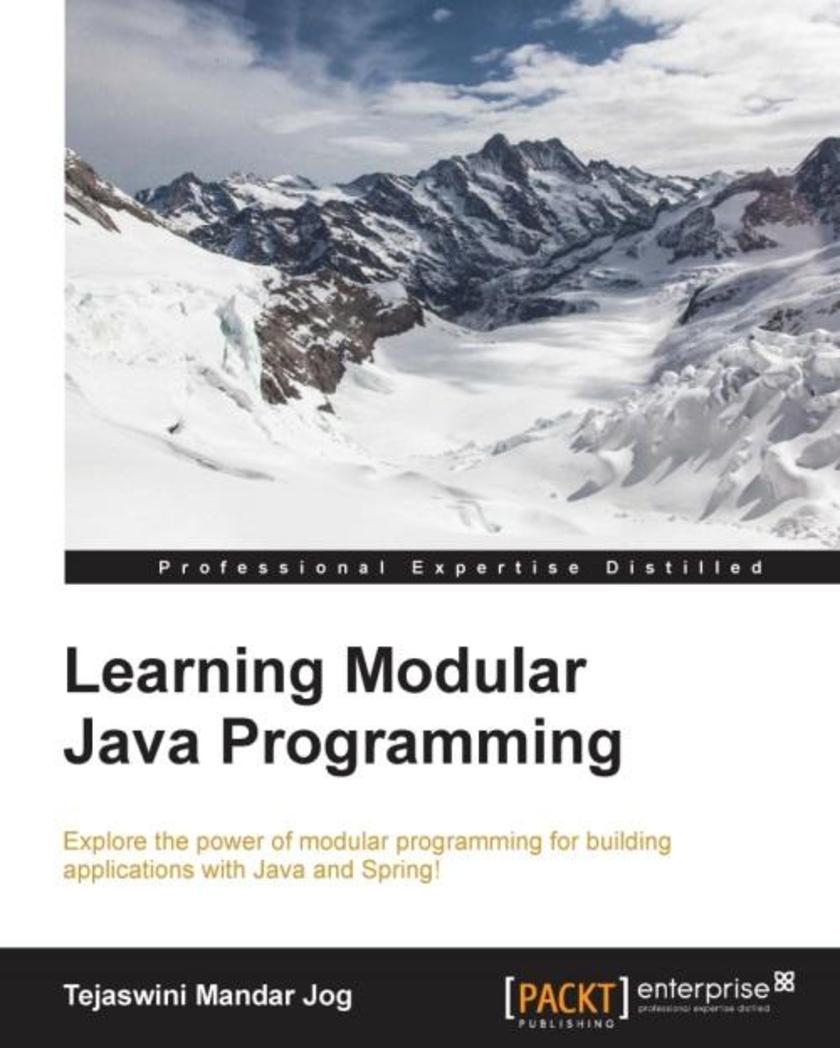
Learning Modular Java Programming
¥63.21
Explore the power of modular programming for building applications with Java and Spring! About This Book Understand the basic concepts of Modular Programming to build enterprise applications with Java Create short and precise code and eliminate recursion The book follows a step-by-step approach that makes implementing Modular Programming easy Who This Book Is For This book targets Java developers who have a basic knowledge of application development with Java and are interested in learning the Modular Programming approach for building reusable applications that are easy to test, and thus improve overall project management. What You Will Learn Learn about Modular Programming and what modules an enterprise application can be divided into. Set up a development environment and create a "Hello World" application. Start implementing a sample application from the presentation layer. Implement the persistence layer. Implement the business layer, wrapping up all of the modules with Contexts and Dependency Injection (CDI). Manage an application's life cycle. Learn how to secure Web applications. Test enterprise applications and their automation. Understand how to version source code using Source Code Management (SCM) systems such as GIT and SVN. In Detail Modular programming means dividing an application into small parts and then developing it. It is an approach taken by developers to build applications and helps them add efficiency in their development process, thus making it more effective. The book starts with the fundamentals of Modular Programming. Then we move on to the actual implementation, where we teach developers how to divide an application into different modules or layers (such as presentation, execution, security, lifecycle, services, and so on) for better management. Once readers are well-versed in these modules and their development, the book shows how to create bindings in order to join these different modules and form a complete application. Next, the readers will learn how to manage these modules through dependency injection. Later, we move on to testing; readers will learn how to test the different modules of an application. The book ends by teaching readers how to maintain different versions of their application and how to modify it. By the end of the book, readers will have a good understanding of modular programming and will be able to use it to build applications with Java. Style and approach This book is a practical guide to help readers learn Modular Programming with Java and build an enterprise-ready app along the way. The book is divided into three major sections. The first teaches the fundamentals of Modular Programming and how to implement them; the second teaches readers to combine and manage the modules developed; in the final section, the book explains the applications of Modular Programming.
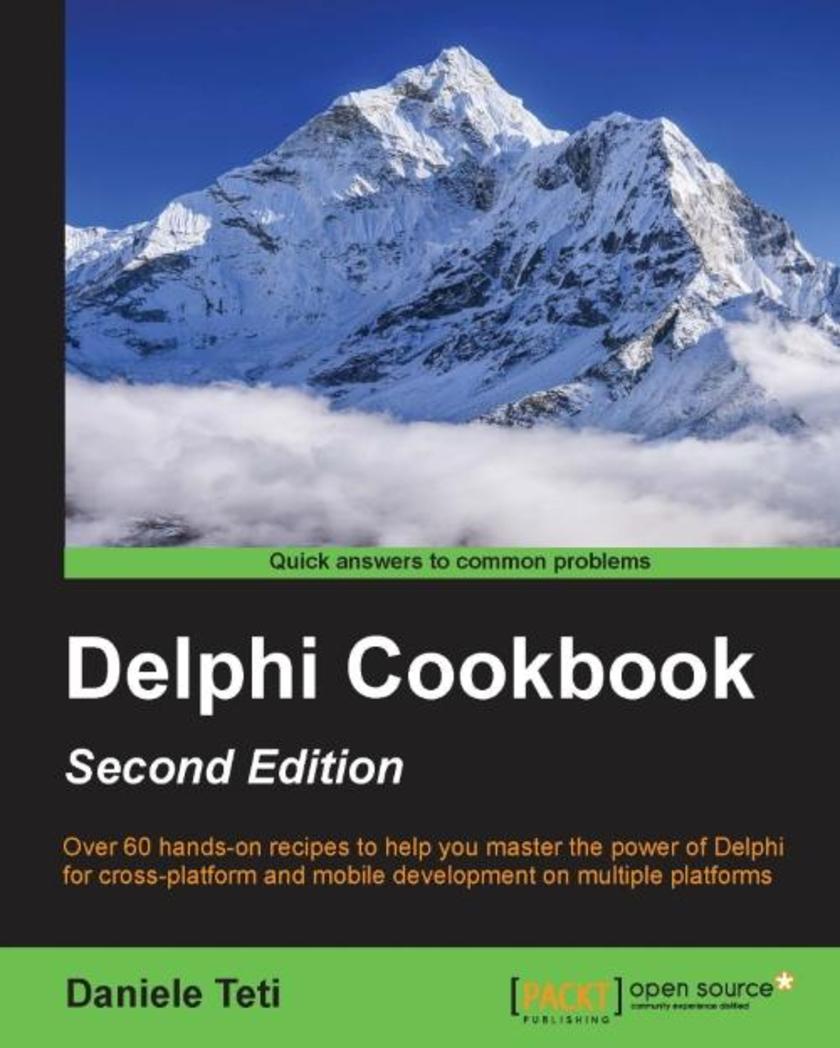
Delphi Cookbook - Second Edition
¥90.46
Over 60 hands-on recipes to help you master the power of Delphi for cross-platform and mobile development on multiple platforms About This Book Get to grips with Delphi to build and deploy various cross-platform applications Design, develop, and deploy real-world applications by implementing a single source codebase This swift guide will increase your productivity to develop applications with Delphi Who This Book Is For If you are an intermediate developer with a basic knowledge of Delphi and you want to develop cross-platform applications, then this book is for you. Familiarity with the fundamentals of RAD (Rapid Application Development) Studio is expected. What You Will Learn Develop visually stunning applications using FireMonkey Deploy LiveBinding effectively with the right OOP approach Create server-side programs to serve RESTful web services and provide data to your mobile apps Use well-defined GUI design patterns to build mobile applications that provide a great user experience Build mobile apps that read data from a remote server efficiently Call the platform native API on Android and iOS even for an unpublished API Manage software customization for your customer by making better use of an extended RTTI Implement the most popular design pattern without wasting too much time on debugging and bug fixing In Detail Delphi is a cross-platform Integrated Development Environment (IDE) that supports rapid application development for Microsoft Windows, Apple Mac OS X, Google Android, and Apple iOS. It helps you to concentrate on the real business and save yourself the pain of wandering amid GUI widget details, or having to tackle inter-platform incompatibilities. It also has a wide range of drag-and-drop controls, helping you code your business logic into your business model, and it compiles natively for desktop and mobile platforms. This book will teach you how to design and develop applications, deploy them on the cloud platform, and distribute them within an organization via Google Play and other similar platforms. You will begin with the basics of Delphi and get acquainted with JSON format strings, XSLT transformations, unicode encodings and various types of streams. We then move on to more advanced topics such as developing higher-order functions and using enumerators and RTTI. You will get an understanding of how Delphi RTL functions and how to use FireMonkey in a VCL application. We will then cover topics such as multithreading, using the parallel programming library and putting Delphi on a server. We will also take a look at the new feature of WebBroker Apache modules and then ride the mobile revolution with FireMonkey. By the end of the book, you will be able to develop and deploy cross-platform applications using Delphi. Style and approach Delphi Cookbook is an easy-to-follow guide, rich with hands-on examples of real-world programming tasks in Delphi.
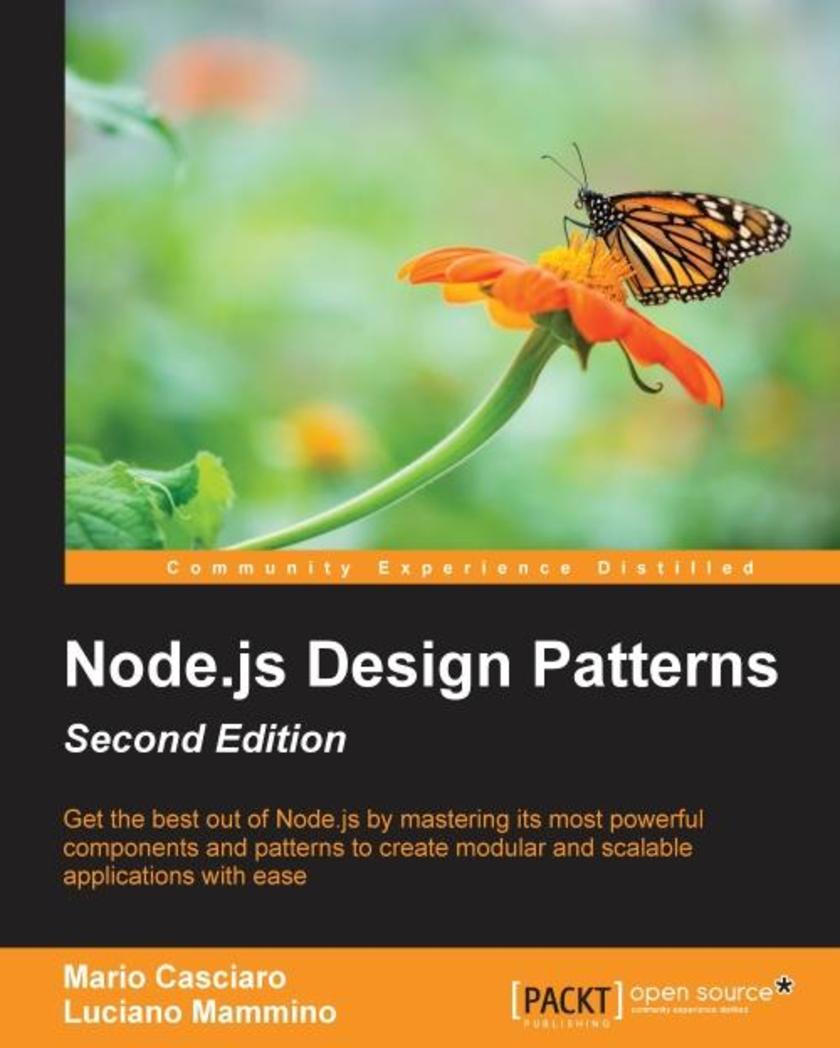
Node.js Design Patterns - Second Edition
¥90.46
Get the best out of Node.js by mastering its most powerful components and patterns to create modular and scalable applications with ease About This Book Create reusable patterns and modules by leveraging the new features of Node.js . Understand the asynchronous single thread design of node and grasp all its features and patterns to take advantage of various functions. This unique guide will help you get the most out of Node.js and its ecosystem. Who This Book Is For The book is meant for developers and software architects with a basic working knowledge of JavaScript who are interested in acquiring a deeper understanding of how to design and develop enterprise-level Node.js applications. Basic knowledge of Node.js is also helpful to get the most out of this book. What You Will Learn Design and implement a series of server-side JavaScript patterns so you understand why and when to apply them in different use case scenarios Become comfortable with writing asynchronous code by leveraging constructs such as callbacks, promises, generators and the async-await syntax Identify the most important concerns and apply unique tricks to achieve higher scalability and modularity in your Node.js application Untangle your modules by organizing and connecting them coherently Reuse well-known techniques to solve common design and coding issues Explore the latest trends in Universal JavaScript, learn how to write code that runs on both Node.js and the browser and leverage React and its ecosystem to implement universal applications In Detail Node.js is a massively popular software platform that lets you use JavaScript to easily create scalable server-side applications. It allows you to create efficient code, enabling a more sustainable way of writing software made of only one language across the full stack, along with extreme levels of reusability, pragmatism, simplicity, and collaboration. Node.js is revolutionizing the web and the way people and companies create their software. In this book, we will take you on a journey across various ideas and components, and the challenges you would commonly encounter while designing and developing software using the Node.js platform. You will also discover the "Node.js way" of dealing with design and coding decisions. The book kicks off by exploring the basics of Node.js describing it's asynchronous single-threaded architecture and the main design patterns. It then shows you how to master the asynchronous control flow patterns,and the stream component and it culminates into a detailed list of Node.js implementations of the most common design patterns as well as some specific design patterns that are exclusive to the Node.js world.Lastly, it dives into more advanced concepts such as Universal Java*, and scalability' and it's meant to conclude the journey by giving the reader all the necessary concepts to be able to build an enterprise grade application using Node.js. Style and approach This book takes its intended readers through a comprehensive explanation to create a scalable and efficient real-time server-side apps.
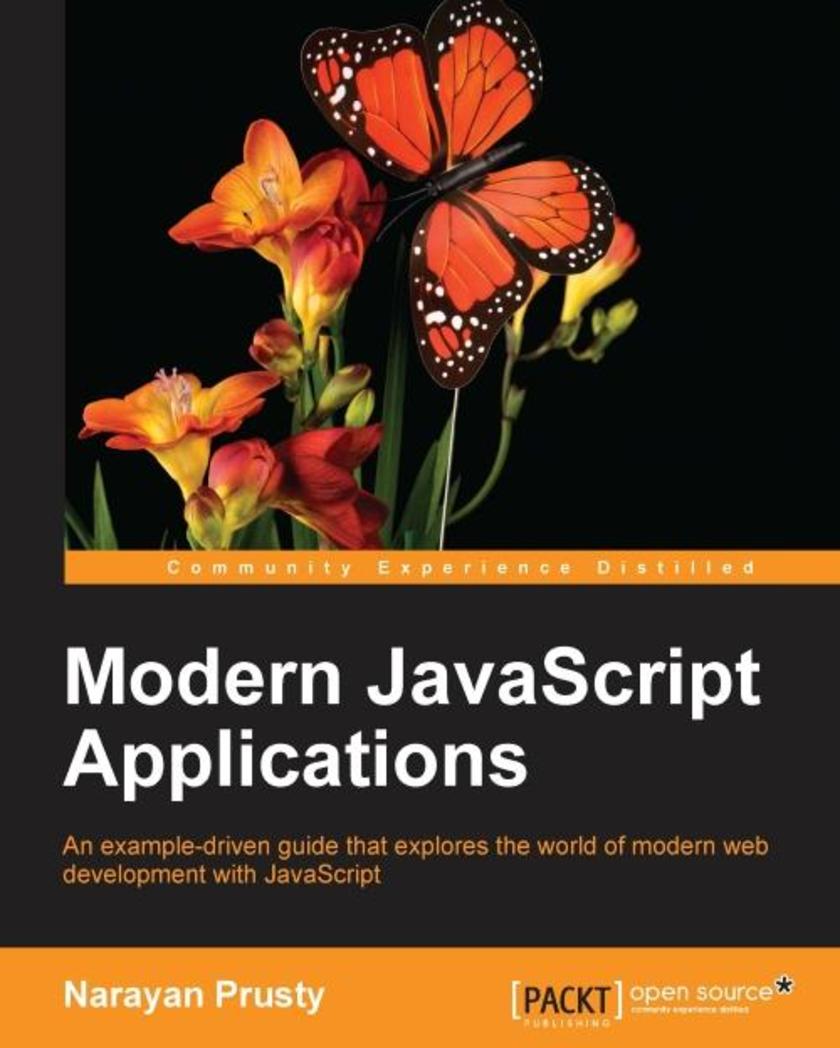
Modern JavaScript Applications
¥90.46
An example-driven guide that explores the world of modern web development with JavaScript About This Book Explore the new features of ECMAScript 6 and how they can be incorporated to build cutting edge web applications Learn about modern web architectures and build real-world apps on top of them Make use of modern JavaScript tools, techniques and frameworks to enhance your web development skills Who This Book Is For This book is for existing JavaScript developers who want to explore some of the modern JavaScript features, techniques, and architectures to develop cutting edge web applications. What You Will Learn Learn to create single page websites Gain expertise in responsive and dynamic website design Enable Real-time communications between client-client and client-server/server-client Create APIs for large-scale applications Write complete applications using functional reactive programming In Detail Over the years, JavaScript has taken significant strides in the world of modern web development to enhance the development of a wide range of applications with different architectures. This book explores the advanced and new features that have arrived in JavaScript and how they can be applied to develop high-quality applications with different architectures. The book begins by covering a single page application that builds on the innovative MVC approach using AngularJS. As we move forward, the book shows you how to develop an enterprise-level application with the microservices architecture, using Node to build web services. We then focus on network programming concepts and you’ll build a real-time web application with websockets. When you’ve gained a solid grip on the different architectures, we’ll move on to the area where JavaScript shines, that is, UI development. You’ll learn to build responsive, declarative UIs with React and Bootstrap. As we near the end of this book, you’ll see how the performance of web applications can be enhanced using Functional Reactive Programming (FRP). Along the way, the book also explores how the power of JavaScript can be increased multi-fold. After reading this book, you will have a solid knowledge of the latest JavaScript techniques, tools, and architecture to build modern web apps. Style and approach Covering all the new features in ECMAScript 6, this book takes a project-based approach to introduce you to all the latest techniques, tools, and architectures of JavaScript web development. Each project that the book builds will show you a different angle of the power of JavaScript in modern web development.
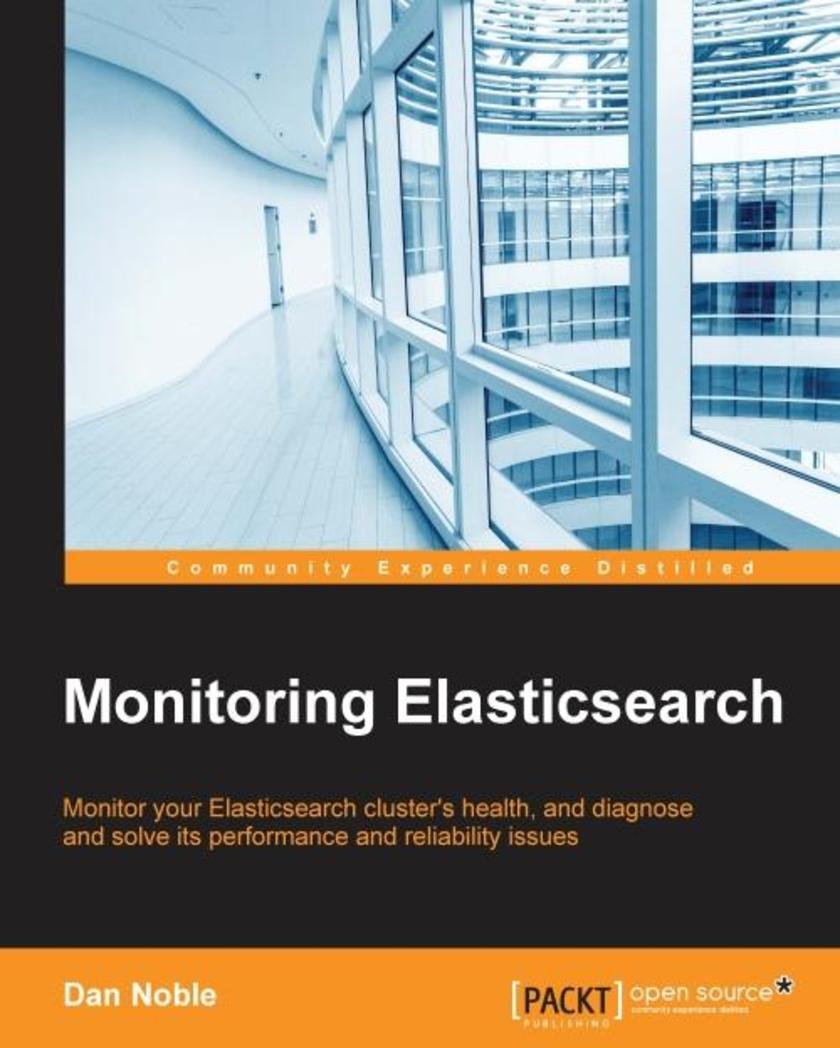
Monitoring Elasticsearch
¥63.21
Monitor your Elasticsearch cluster's health, and diagnose and solve its performance and reliability issues About This Book Understand common performance and reliability pitfalls in ElasticSearch Use popular monitoring tools such as ElasticSearch-head, BigDesk, Marvel, Kibana, and more This is a step-by-step guide with lots of case studies on solving real-world ElasticSearch cluster issues Who This Book Is For This book is for developers and system administrators who use ElasticSearch in a wide range of capacities. Prior knowledge of ElasticSearch and related technologies would be helpful, but is not necessary. What You Will Learn Explore your cluster with ElasticSearch-head and BigDesk Access the underlying data of the ElasticSearch monitoring plugins using the ElasticSearch API Analyze your cluster’s performance with Marvel Troubleshoot some of the common performance and reliability issues that come up when using ElasticSearch Analyze a cluster’s historical performance, and get to the bottom of and recover from system failures Use and install various other tools and plugins such as Kibana and Kopf, which is helpful to monitor ElasticSearch In Detail ElasticSearch is a distributed search server similar to Apache Solr with a focus on large datasets, a schema-less setup, and high availability. This schema-free architecture allows ElasticSearch to index and search unstructured content, making it perfectly suited for both small projects and large big data warehouses with petabytes of unstructured data. This book is your toolkit to teach you how to keep your cluster in good health, and show you how to diagnose and treat unexpected issues along the way. You will start by getting introduced to ElasticSearch, and look at some common performance issues that pop up when using the system. You will then see how to install and configure ElasticSearch and the ElasticSearch monitoring plugins. Then, you will proceed to install and use the Marvel dashboard to monitor ElasticSearch. You will find out how to troubleshoot some of the common performance and reliability issues that come up when using ElasticSearch. Finally, you will analyze your cluster’s historical performance, and get to know how to get to the bottom of and recover from system failures. This book will guide you through several monitoring tools, and utilizes real-world cases and dilemmas faced when using ElasticSearch, showing you how to solve them simply, quickly, and cleanly. Style and approach This is a step-by-step guide to monitoring your ElasticSearch cluster and correcting performance issues. It is filled with lots of in-depth, real-world use-cases on solving different ElasticSearch cluster issues.
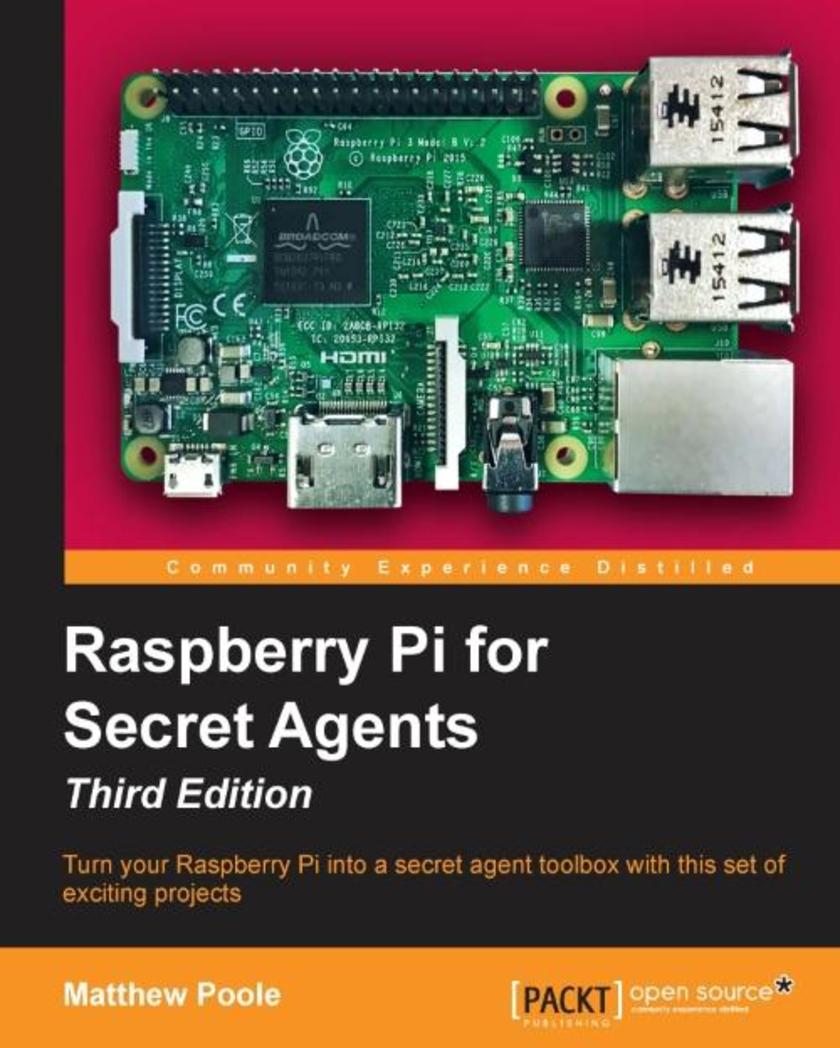
Raspberry Pi for Secret Agents - Third Edition
¥63.21
Turn your Raspberry Pi into a secret agent toolbox with this set of exciting projects About This Book Turn your Raspberry Pi into a multi-purpose secret agent gadget for audio and video surveillance, Wi-Fi exploration, or playing pranks on your friends Detect an intruder on camera or with sensors and set off an alarm or receive messages to your phone Find out what the other computers on your network are up to and make yourself anonymous on the Internet This book has been updated for new additions to your toolkit featuring the tiny, recently released Raspberry Pi Zero board Who This Book Is For This book is for those who are new to the Raspberry Pi Zero ,Raspberry Pi 2 or Raspberry Pi 3 and have some experience with the original Raspberry Pi models, and even for those budding secret agents who would like to use Pi Zero as a secret agent toolbox. No programming experience is assumed. Suitable for the novice and expert alike, each topic provides a fast and easy way to get started with exciting applications, with practical examples in every chapter. What You Will Learn Install and configure the Raspbian Jessie operating system for maximum mischief Detect an intruder with motion detection or a laser trip wire and set off an alarm Listen in to conversations from a distance over Bluetooth Distort your voice in weird and wonderful ways Track the Pi's whereabouts using GPS Connect your Pi to the mobile Internet using a 3G dongle and make yourself anonymous on the net Display secret messages and codes to fellow agents on a LED display In Detail This book is for all mischievous Raspberry Pi owners who’d like to see their computer transform into a neat spy gadget to be used in a series of practical pranks and projects. No previous skills are required to follow along, and if you’re completely new to Linux, you’ll pick up much of the basics for free. We’ll help you set up your Raspberry Pi Zero , Raspberry Pi 2 and Raspberry Pi 3 and guide you through a number of pranks and secret agent techniques that are so inconspicuous yet high on mischief. You’ll learn how to configure your operating system for maximum mischief and start exploring audio, video, or Wi-Fi techniques. We’ll show you how to record, listen, or talk to people from a distance and how to set up your own phone network. Then, you’ll plug in your webcam and set up a motion detector with an alarm and find out what the other computers on your Wi-Fi network are up to. Once you've mastered the techniques, we’ll combine them with a battery pack and GPS for the ultimate off-road spy kit. Style and Approach This easy-to-follow guide is for budding secret agents who want to create tools for mischief, stealth, and reconnaissance. It’s full of fun, practical examples and easy-to-follow recipes, guaranteeing maximum mischief for all skill levels.
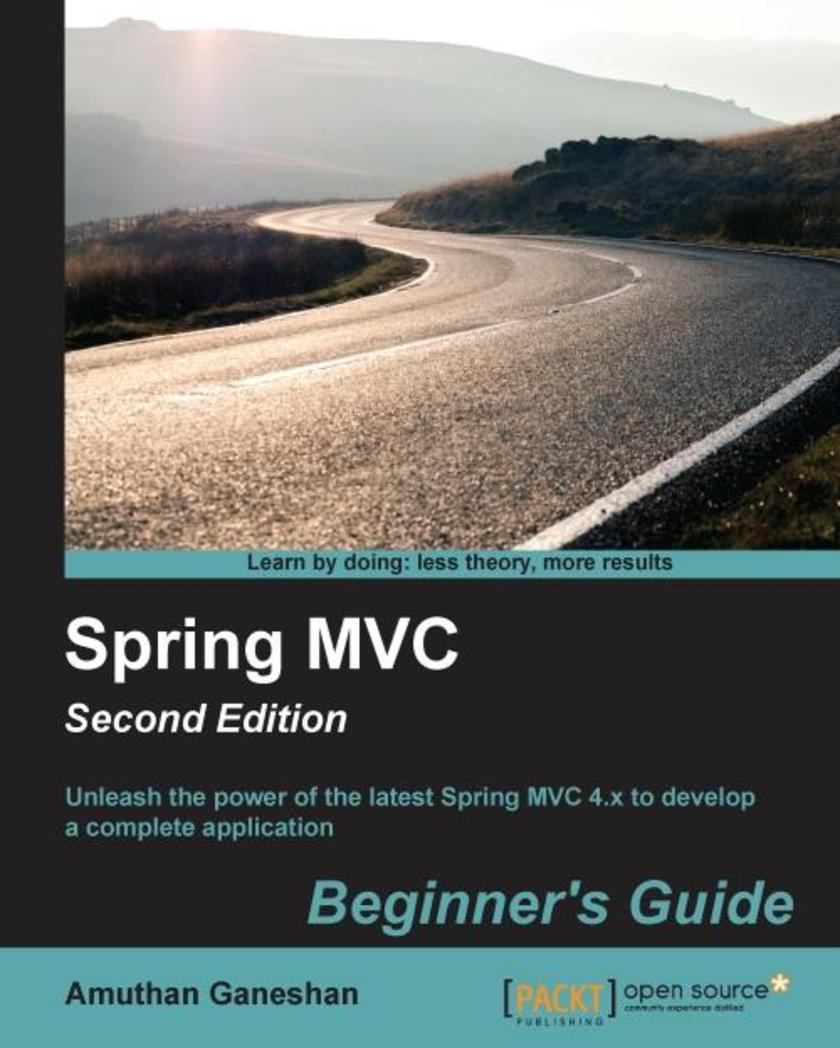
Spring MVC: Beginner's Guide - Second Edition
¥80.65
Unleash the power of the latest Spring MVC 4.x to develop a complete application About This Book Work through carefully crafted exercises with detailed explanations for each step will help you understand the concepts with ease You will gain a clear understanding of the end-to-end request/response life cycle, and each logical component’s responsibility This book is packed with tips and tricks that demonstrate industry best practices on developing a Spring-MVC-based application Who This Book Is For The book is for Java developers who want to exploit Spring MVC and its features to build web applications. Some familiarity with basic servlet programming concepts would be a plus, but is not a prerequisite. What You Will Learn Familiarize yourself with the anatomy of the Spring 4.X development environment Understand web application architecture and the Spring MVC request flow Integrate bean validation and custom validation Use error handling and exception resolving Get to grips with REST-based web service development and Ajax Test your web application In Detail Spring MVC helps you build flexible and loosely coupled web applications. The Spring MVC Framework is architected and designed in such a way that every piece of logic and functionality is highly configurable. Also, Spring can integrate effortlessly with other popular web frameworks such as Struts, WebWork, Java Server Faces, and Tapestry. The book progressively teaches you to configure the Spring development environment, architecture, controllers, libraries, and more before moving on to developing a full web application. It begins with an introduction to the Spring development environment and architecture so you're familiar with the know-hows. From here, we move on to controllers, views, validations, Spring Tag libraries, and more. Finally, we integrate it all together to develop a web application. You'll also get to grips with testing applications for reliability. Style and approach This book takes a pragmatic step-by-step approach to web application development using Spring MVC, with informative screenshots and concise explanation.
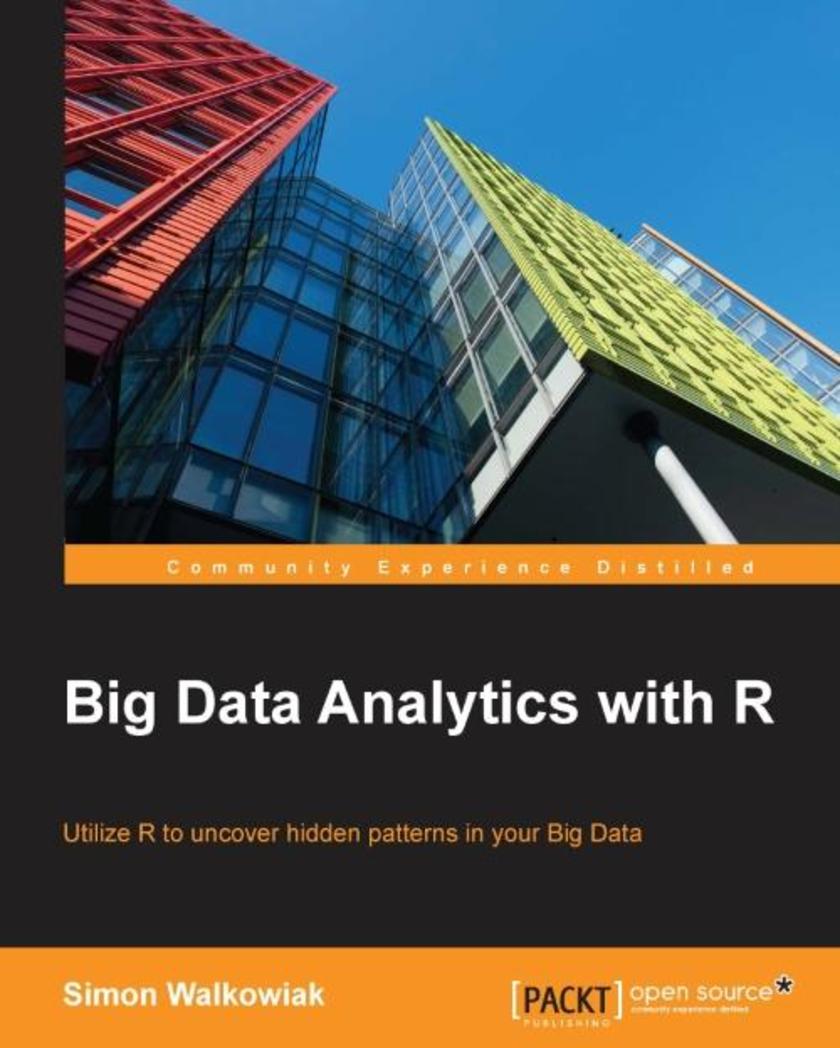
Big Data Analytics with R
¥99.18
Utilize R to uncover hidden patterns in your Big Data About This Book Perform computational analyses on Big Data to generate meaningful results Get a practical knowledge of R programming language while working on Big Data platforms like Hadoop, Spark, H2O and SQL/NoSQL databases, Explore fast, streaming, and scalable data analysis with the most cutting-edge technologies in the market Who This Book Is For This book is intended for Data Analysts, Scientists, Data Engineers, Statisticians, Researchers, who want to integrate R with their current or future Big Data workflows. It is assumed that readers have some experience in data analysis and understanding of data management and algorithmic processing of large quantities of data, however they may lack specific skills related to R. What You Will Learn Learn about current state of Big Data processing using R programming language and its powerful statistical capabilities Deploy Big Data analytics platforms with selected Big Data tools supported by R in a cost-effective and time-saving manner Apply the R language to real-world Big Data problems on a multi-node Hadoop cluster, e.g. electricity consumption across various socio-demographic indicators and bike share scheme usage Explore the compatibility of R with Hadoop, Spark, SQL and NoSQL databases, and H2O platform In Detail Big Data analytics is the process of examining large and complex data sets that often exceed the computational capabilities. R is a leading programming language of data science, consisting of powerful functions to tackle all problems related to Big Data processing. The book will begin with a brief introduction to the Big Data world and its current industry standards. With introduction to the R language and presenting its development, structure, applications in real world, and its shortcomings. Book will progress towards revision of major R functions for data management and transformations. Readers will be introduce to Cloud based Big Data solutions (e.g. Amazon EC2 instances and Amazon RDS, Microsoft Azure and its HDInsight clusters) and also provide guidance on R connectivity with relational and non-relational databases such as MongoDB and HBase etc. It will further expand to include Big Data tools such as Apache Hadoop ecosystem, HDFS and MapReduce frameworks. Also other R compatible tools such as Apache Spark, its machine learning library Spark MLlib, as well as H2O. Style and approach This book will serve as a practical guide to tackling Big Data problems using R programming language and its statistical environment. Each section of the book will present you with concise and easy-to-follow steps on how to process, transform and analyse large data sets.
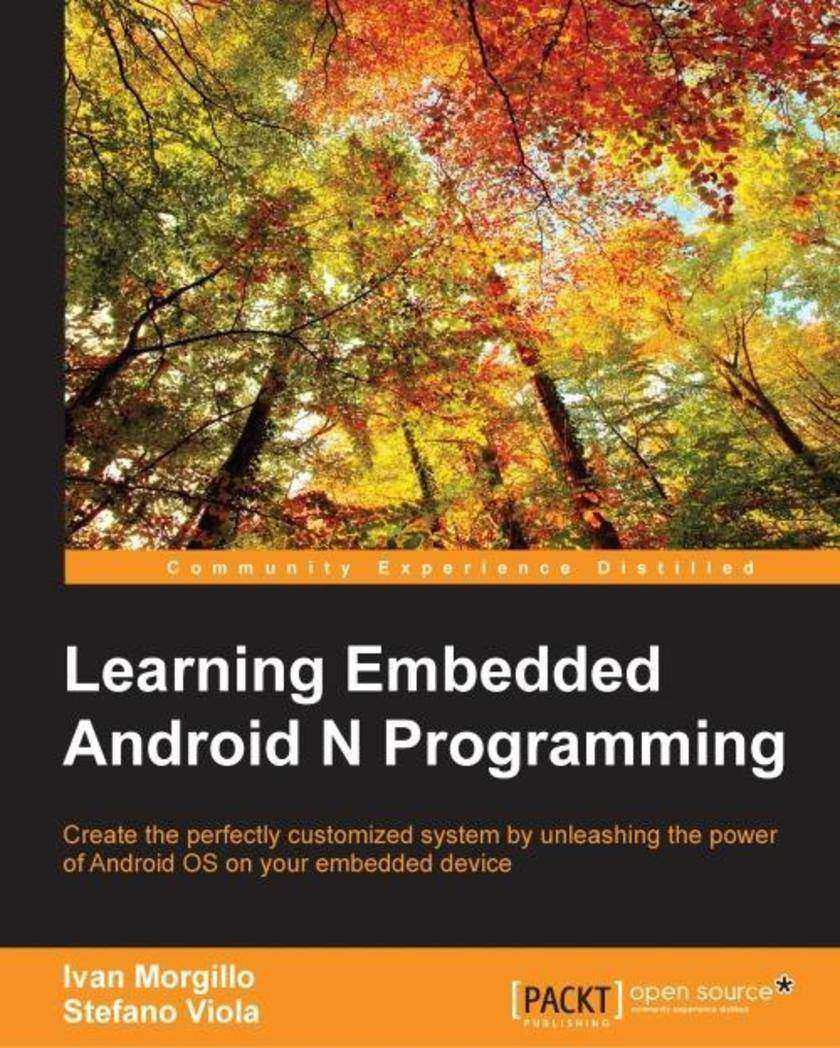
Learning Embedded Android N Programming
¥80.65
Create the perfectly customized system by unleashing the power of Android OS on your embedded device About This Book Understand the system architecture and how the source code is organized Explore the power of Android and customize the build system Build a fully customized Android version as per your requirements Who This Book Is For If you are a Java programmer who wants to customize, build, and deploy your own Android version using embedded programming, then this book is for you. What You Will Learn Master Android architecture and system design Obtain source code and understand the modular organization Customize and build your first system image for the Android emulator Level up and build your own Android system for a real-world device Use Android as a home automation and entertainment system Tailor your system with optimizations and add-ons Reach for the stars: look at the Internet of Things, entertainment, and domotics In Detail Take a deep dive into the Android build system and its customization with Learning Embedded Android Programming, written to help you master the steep learning curve of working with embedded Android. Start by exploring the basics of Android OS, discover Google’s “repo” system, and discover how to retrieve AOSP source code. You'll then find out to set up the build environment and the first AOSP system. Next, learn how to customize the boot sequence with a new animation, and use an Android “kitchen” to “cook” your custom ROM. By the end of the book, you'll be able to build customized Android open source projects by developing your own set of features. Style and approach This step-by-step guide is packed with various real-world examples to help you create a fully customized Android system with the most useful features available.
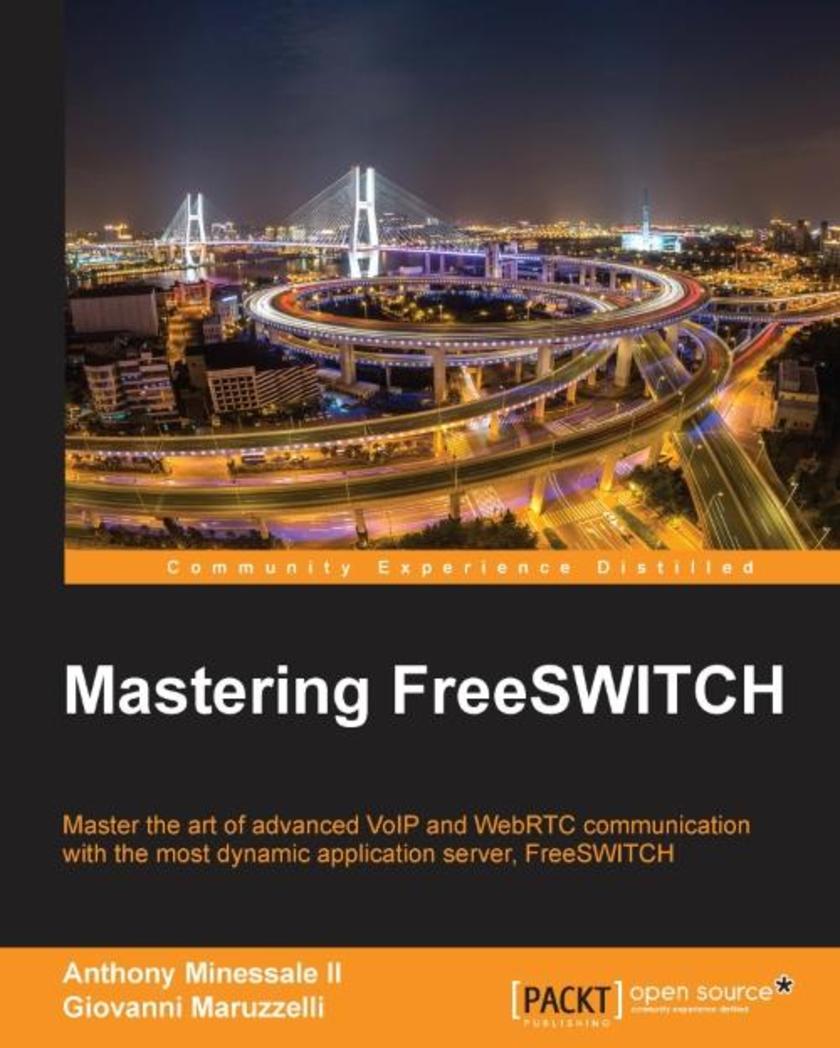
Mastering FreeSWITCH
¥80.65
Master the art of advanced VoIP and WebRTC communication with the most dynamic application server, FreeSWITCH About This Book Forget the hassle - make FreeSWITCH work for you Discover how FreeSWITCH integrates with a range of tools and APIs From high availability to IVR development use this book to become more confident with this useful communication software Who This Book Is For SysAdmins, VoIP engineers – whoever you are, whatever you’re trying to do, this book will help you get more from FreeSWITCH. What You Will Learn Get to grips with the core concepts of FreeSWITCH Learn FreeSWITCH high availability Work with SIP profiles, gateways, ITSPs, and Codecs optimization Implement effective security on your projects Master audio manipulation and recording Discover how FreeSWITCH works alongside WebRTC Build your own complex IVR and PBX applications Connect directly to PSTN/TDM Create your own FreeSWITCH module Trace SIP packets with the help of best open source tools Implement Homer Sipcapture to troubleshoot and debug all your platform traffic In Detail FreeSWITCH is one of the best tools around if you’re looking for a modern method of managing communication protocols through a range of different media. From real-time browser communication with the WebRTC API to implementing VoIP (voice over internet protocol), with FreeSWITCH you’re in full control of your projects. This book shows you how to unlock its full potential – more than just a tutorial, it’s packed with plenty of tips and tricks to make it work for you. Written by members of the team who actually helped build FreeSWITCH, it will guide you through some of the newest features of version 1.6 including video transcoding and conferencing. Find out how FreeSWITCH interacts with other tools and APIs, learn how to tackle common (and not so common) challenges ranging from high availability to IVR development and programming advanced PBXs. Great communication functionality begins with FreeSWITCH – find out how and get your project up and running today. Style and approach Find out how it works, then put your knowledge into practice - that's how this advanced FreeSWITCH guide has been designed to help you learn. You'll soon master FreeSWITCH and be confident using it in your projects.
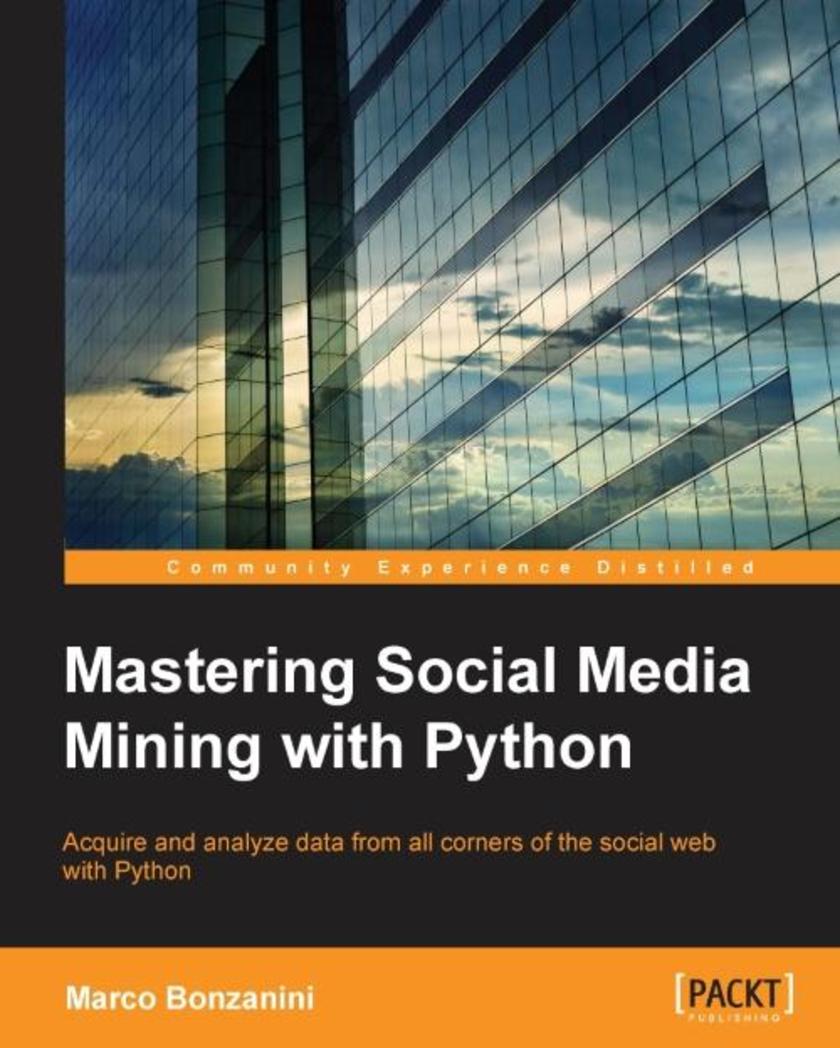
Mastering Social Media Mining with Python
¥80.65
Acquire and analyze data from all corners of the social web with Python About This Book Make sense of highly unstructured social media data with the help of the insightful use cases provided in this guide Use this easy-to-follow, step-by-step guide to apply analytics to complicated and messy social data This is your one-stop solution to fetching, storing, analyzing, and visualizing social media data Who This Book Is For This book is for intermediate Python developers who want to engage with the use of public APIs to collect data from social media platforms and perform statistical analysis in order to produce useful insights from data. The book assumes a basic understanding of the Python Standard Library and provides practical examples to guide you toward the creation of your data analysis project based on social data. What You Will Learn Interact with a social media platform via their public API with Python Store social data in a convenient format for data analysis Slice and dice social data using Python tools for data science Apply text analytics techniques to understand what people are talking about on social media Apply advanced statistical and analytical techniques to produce useful insights from data Build beautiful visualizations with web technologies to explore data and present data products In Detail Your social media is filled with a wealth of hidden data – unlock it with the power of Python. Transform your understanding of your clients and customers when you use Python to solve the problems of understanding consumer behavior and turning raw data into actionable customer insights. This book will help you acquire and analyze data from leading social media sites. It will show you how to employ scientific Python tools to mine popular social websites such as Facebook, Twitter, Quora, and more. Explore the Python libraries used for social media mining, and get the tips, tricks, and insider insight you need to make the most of them. Discover how to develop data mining tools that use a social media API, and how to create your own data analysis projects using Python for clear insight from your social data. Style and approach This practical, hands-on guide will help you learn everything you need to perform data mining for social media. Throughout the book, we take an example-oriented approach to use Python for data analysis and provide useful tips and tricks that you can use in day-to-day tasks.
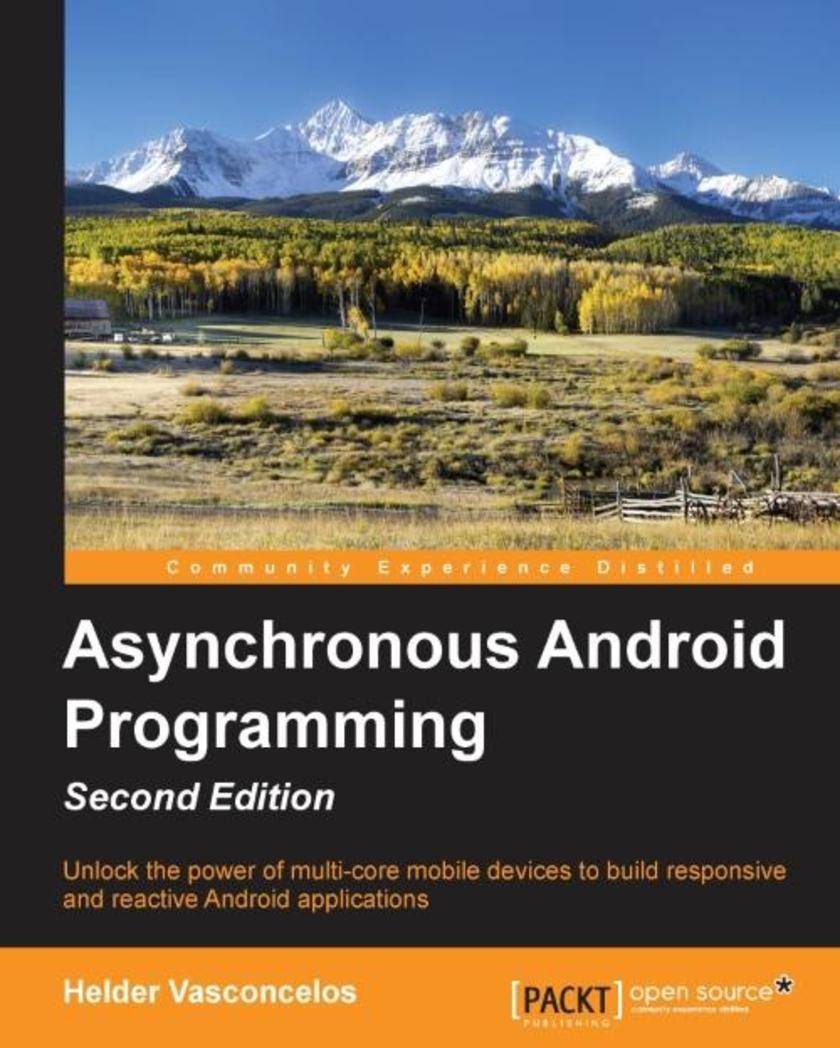
Asynchronous Android Programming - Second Edition
¥90.46
Unlock the power of multi-core mobile devices to build responsive and reactive Android applications About This Book Construct scalable and performant applications to take advantage of multi-thread asynchronous techniques Explore the high-level Android asynchronous constructs available on the Android SDK Choose the most appropriate asynchronous technique to implement your next outstanding feature Who This Book Is For This book is for Android developers who want to learn how to build multithreaded and reliable Android applications using high-level and advanced asynchronous techniques and concepts. No prior knowledge of concurrent and asynchronous programming is required. This book will also be great for Java experts who are new to Android. Whether you are a beginner at Android development or a seasoned Android programmer, this book will guide you through the most basic and advanced asynchronous constructs used in Android programming. What You Will Learn Get familiar with the android process model and low-level concurrent constructs delivered by the Android SDK Use AsyncTask and loader framework to load data in the background, delivering progress results in the meantime Create services that interact with your activity without compromising the UI rendering Learn the working of Android concurrency on the Native Layer Interact with nearby devices over Bluetooth and WiFi communications channels Create and compose tasks with RxJava to execute complex asynchronous work in a predictable way Get accustomed to the use of the Android Loader construct to deliver up-to-date results In Detail Asynchronous programming has acquired immense importance in Android programming, especially when we want to make use of the number of independent processing units (cores) available on the most recent Android devices. With this guide in your hands you’ll be able to bring the power of Asynchronous programming to your own projects, and make your Android apps more powerful than ever before! To start with, we will discuss the details of the Android Process model and the Java Low Level Concurrent Framework, delivered by Android SDK. We will also guide you through the high-level Android-specific constructs available on the SDK: Handler, AsyncTask, and Loader. Next, we will discuss the creation of IntentServices, Bound Services and External Services, which can run in the background even when the user is not interacting with it. You will also discover AlarmManager and JobScheduler APIs, which are used to schedule and defer work without sacrificing the battery life. In a more advanced phase, you will create background tasks that are able to execute CPU-intensive tasks in a native code-making use of the Android NDK. You will be then guided through the process of interacting with remote services asynchronously using the HTTP protocol or Google GCM Platform. Using the EventBus library, we will also show how to use the Publish-Subscribe software pattern to simplify communication between the different Android application components by decoupling the event producer from event consumer. Finally, we will introduce RxJava, a popular asynchronous Java framework used to compose work in a concise and reactive way. Asynchronous Android will help you to build well-behaved applications with smooth responsive user interfaces that delight the users with speedy results and data that’s always fresh. Style and approach This easy-to-follow guide is full of code examples of real-world use cases. Each asynchronous topic is explained sequentially, from the most basic and low-level to the more advanced, using concise and effective language. Some lifecycle flows and concepts feature illustrations to help you understand the complex interactions between Android entities.
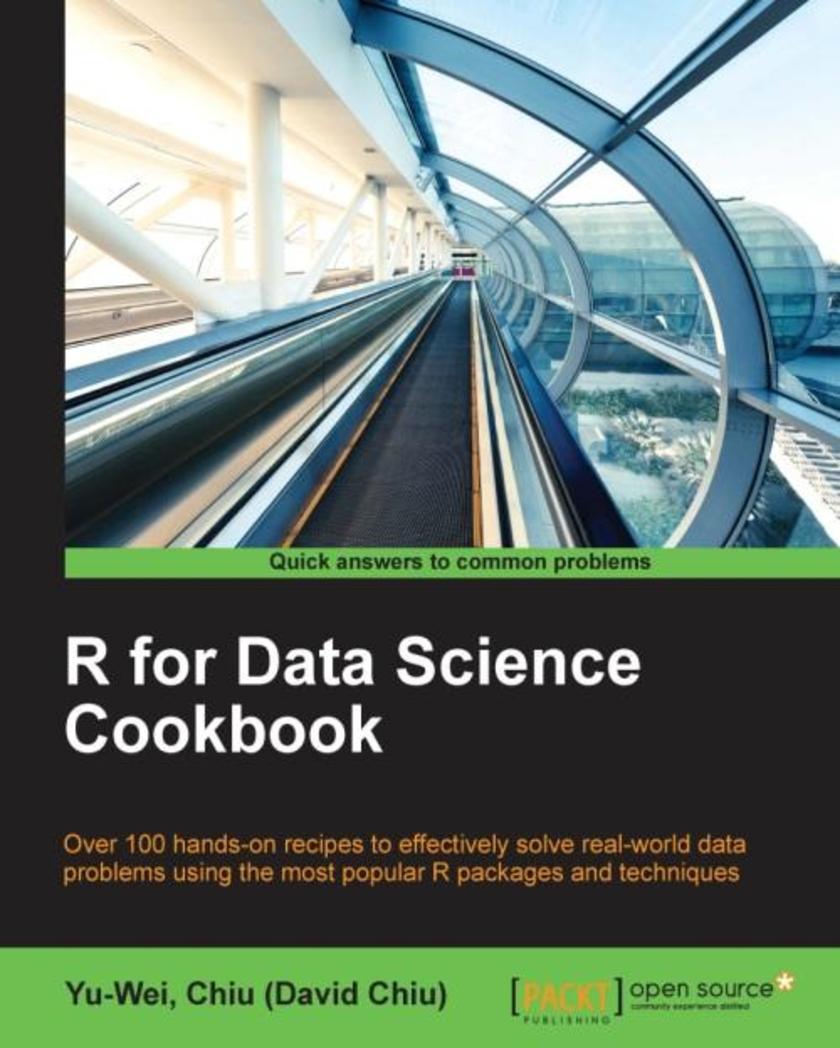
R for Data Science Cookbook
¥80.65
Over 100 hands-on recipes to effectively solve real-world data problems using the most popular R packages and techniques About This Book Gain insight into how data scientists collect, process, analyze, and visualize data using some of the most popular R packages Understand how to apply useful data analysis techniques in R for real-world applications An easy-to-follow guide to make the life of data scientist easier with the problems faced while performing data analysis Who This Book Is For This book is for those who are already familiar with the basic operation of R, but want to learn how to efficiently and effectively analyze real-world data problems using practical R packages. What You Will Learn Get to know the functional characteristics of R language Extract, transform, and load data from heterogeneous sources Understand how easily R can confront probability and statistics problems Get simple R instructions to quickly organize and manipulate large datasets Create professional data visualizations and interactive reports Predict user purchase behavior by adopting a classification approach Implement data mining techniques to discover items that are frequently purchased together Group similar text documents by using various clustering methods In Detail This cookbook offers a range of data analysis samples in simple and straightforward R code, providing step-by-step resources and time-saving methods to help you solve data problems efficiently. The first section deals with how to create R functions to avoid the unnecessary duplication of code. You will learn how to prepare, process, and perform sophisticated ETL for heterogeneous data sources with R packages. An example of data manipulation is provided, illustrating how to use the “dplyr” and “data.table” packages to efficiently process larger data structures. We also focus on “ggplot2” and show you how to create advanced figures for data exploration. In addition, you will learn how to build an interactive report using the “ggvis” package. Later chapters offer insight into time series analysis on financial data, while there is detailed information on the hot topic of machine learning, including data classification, regression, clustering, association rule mining, and dimension reduction. By the end of this book, you will understand how to resolve issues and will be able to comfortably offer solutions to problems encountered while performing data analysis. Style and approach This easy-to-follow guide is full of hands-on examples of data analysis with R. Each topic is fully explained beginning with the core concept, followed by step-by-step practical examples, and concluding with detailed explanations of each concept used.
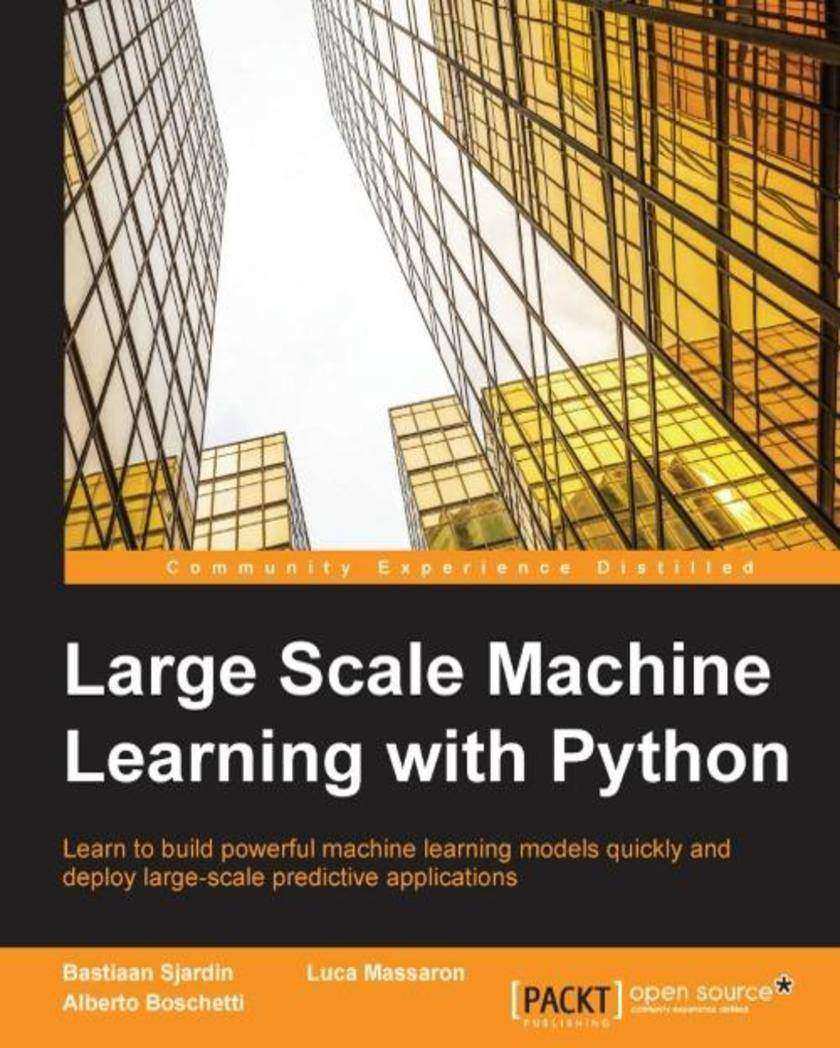
Large Scale Machine Learning with Python
¥90.46
Learn to build powerful machine learning models quickly and deploy large-scale predictive applications About This Book Design, engineer and deploy scalable machine learning solutions with the power of Python Take command of Hadoop and Spark with Python for effective machine learning on a map reduce framework Build state-of-the-art models and develop personalized recommendations to perform machine learning at scale Who This Book Is For This book is for anyone who intends to work with large and complex data sets. Familiarity with basic Python and machine learning concepts is recommended. Working knowledge in statistics and computational mathematics would also be helpful. What You Will Learn Apply the most scalable machine learning algorithms Work with modern state-of-the-art large-scale machine learning techniques Increase predictive accuracy with deep learning and scalable data-handling techniques Improve your work by combining the MapReduce framework with Spark Build powerful ensembles at scale Use data streams to train linear and non-linear predictive models from extremely large datasets using a single machine In Detail Large Python machine learning projects involve new problems associated with specialized machine learning architectures and designs that many data scientists have yet to tackle. But finding algorithms and designing and building platforms that deal with large sets of data is a growing need. Data scientists have to manage and maintain increasingly complex data projects, and with the rise of big data comes an increasing demand for computational and algorithmic efficiency. Large Scale Machine Learning with Python uncovers a new wave of machine learning algorithms that meet scalability demands together with a high predictive accuracy. Dive into scalable machine learning and the three forms of scalability. Speed up algorithms that can be used on a desktop computer with tips on parallelization and memory allocation. Get to grips with new algorithms that are specifically designed for large projects and can handle bigger files, and learn about machine learning in big data environments. We will also cover the most effective machine learning techniques on a map reduce framework in Hadoop and Spark in Python. Style and approach This efficient and practical title is stuffed full of the techniques, tips and tools you need to ensure your large scale Python machine learning runs swiftly and seamlessly. Large-scale machine learning tackles a different issue to what is currently on the market. Those working with Hadoop clusters and in data intensive environments can now learn effective ways of building powerful machine learning models from prototype to production. This book is written in a style that programmers from other languages (R, Julia, Java, Matlab) can follow.
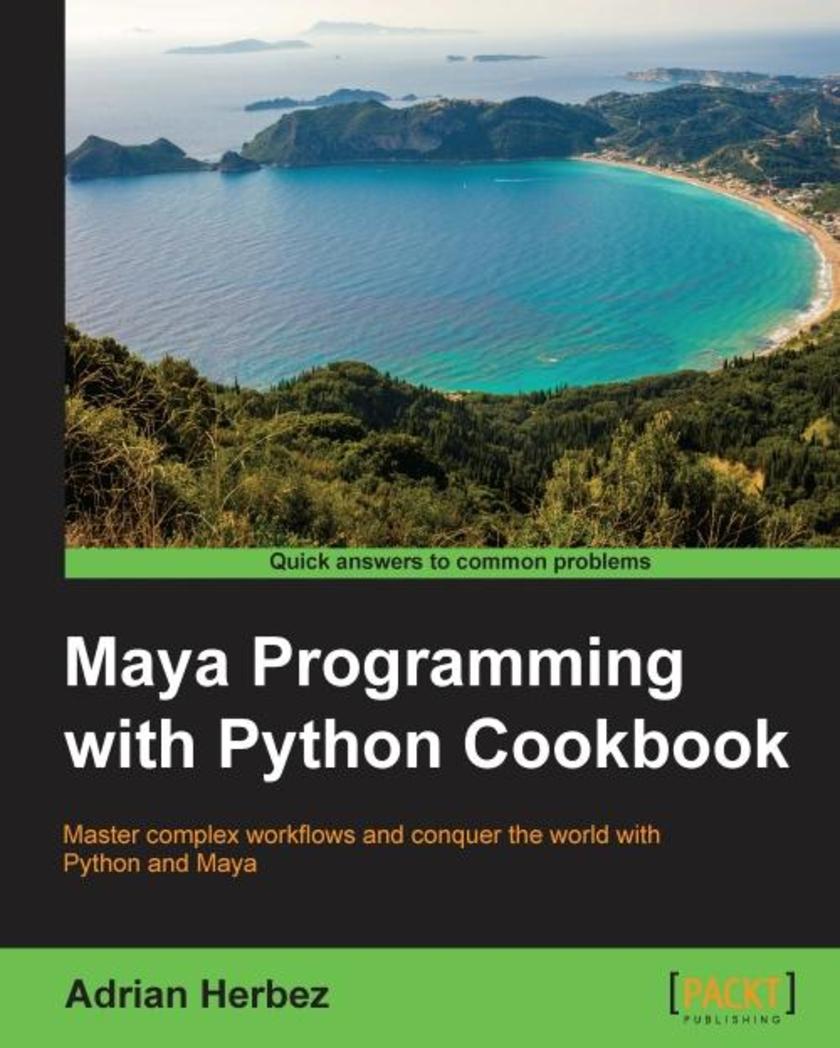
Maya Programming with Python Cookbook
¥80.65
Master complex workflows and conquer the world with Python and Maya About This Book Improve your modelling skills and reduce your *ing problems using Python in Maya Learn to communicate with web applications using Python for easier team development A quick and practical answer to every problem you can have whilst *ing in Maya with Python Who This Book Is For This book is for Python developers who have just started *ing with Maya. What You Will Learn Find out how to use Python *ing to automate tedious tasks Create functional user interfaces to make *s easy to share with others Add new functionality to Maya via the power of *ing Import and export arbitrary data into and out of Maya Improve your workflow, and that of your team Create custom create custom controls to make rigs that are easy to work with Implement a system to render 3D assets for isometric games Use * jobs to trigger actions automatically in response to user interaction Open a command port to allow other applications to communicate with Maya In Detail Maya is a 3D graphics and animation software, used to develop interactive 3D applications and games with stupendous visual effects. The Maya Programming with Python Cookbook is all about creating fast, powerful automation systems with minimum coding using Maya Python. With the help of insightful and essential recipes, this book will help you improve your modelling skills. Expand your development options and overcome *ing problems encountered whilst developing code in Maya. Right from the beginning, get solutions to complex development concerns faced when implementing as parts of build. Style and approach This book is comprised of a set of practical recipes, grouped under specific topics, which can be referred to independently or in sequence. These recipes provide quick solutions to common problems, and cover most of the real-world scenarios that developers are likely to face when working with Maya.
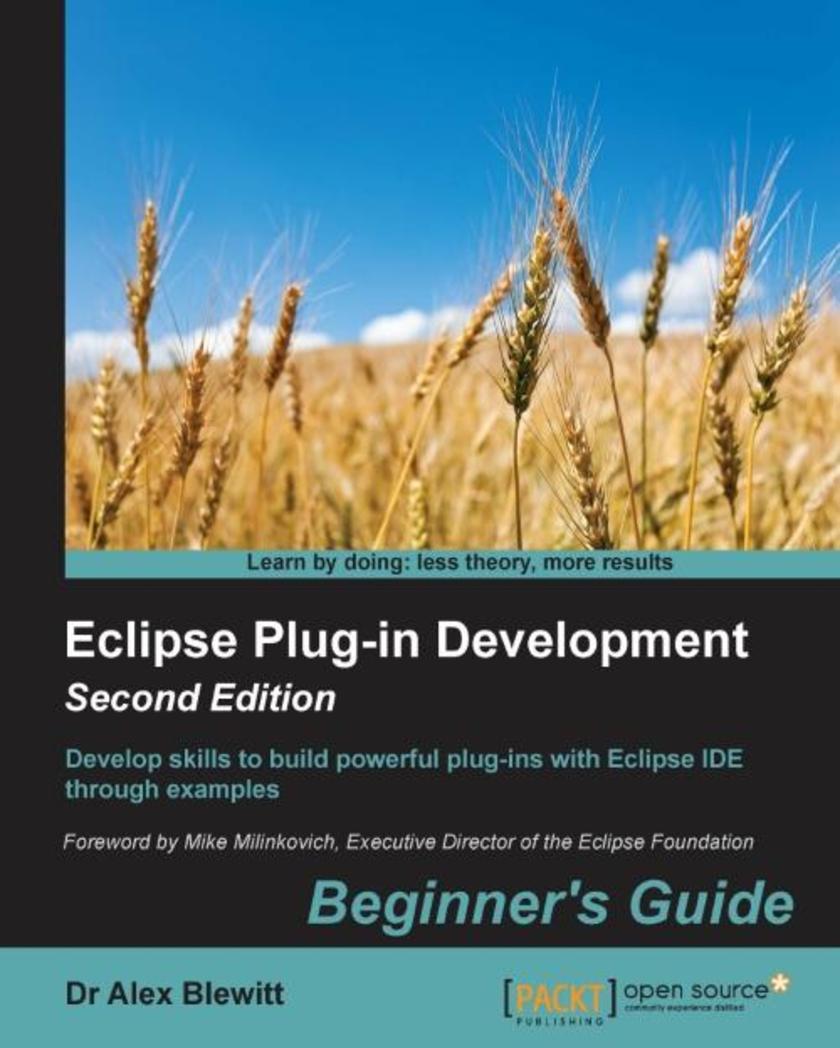
Eclipse Plug-in Development: Beginner's Guide - Second Edition
¥90.46
Develop skills to build powerful plug-ins with Eclipse IDE through examples About This Book Create useful plug-ins to make Eclipse work for you Learn how to migrate Eclipse 3.x plug-ins to Eclipse 4.x From automation to testing, find out how to get your IDE performing at an impressive standard Who This Book Is For This book is for Java developers familiar with Eclipse who need more from the IDE. This book will sharpen your confidence and make you a more productive developer with a tool that supports rather than limits you. What You Will Learn Create plug-ins for Eclipse 4.x Test plug-ins automatically with JUnit Display tree and table information in views Upgrade Eclipse 3.x plug-ins to Eclipse 4.x Find out how to build user interfaces from SWT and JFace Run tasks in the background and update the user interface asynchronously Automate builds of plug-ins and features Automate user interface tests with SWTBot In Detail Eclipse is used by everyone from indie devs to NASA engineers. Its popularity is underpinned by its impressive plug-in ecosystem, which allows it to be extended to meet the needs of whoever is using it. This book shows you how to take full advantage of the Eclipse IDE by building your own useful plug-ins from start to finish. Taking you through the complete process of plug-in development, from packaging to automated testing and deployment, this book is a direct route to quicker, cleaner Java development. It may be for beginners, but we're confident that you'll develop new skills quickly. Pretty soon you'll feel like an expert, in complete control of your IDE. Don't let Eclipse define you - extend it with the plug-ins you need today for smarter, happier, and more effective development. Style and approach Packed with plenty of examples so you're never stuck, or never left simply reading instructions, this book encourages you to get started immediately. This book is for developers who want to develop, not just learn.
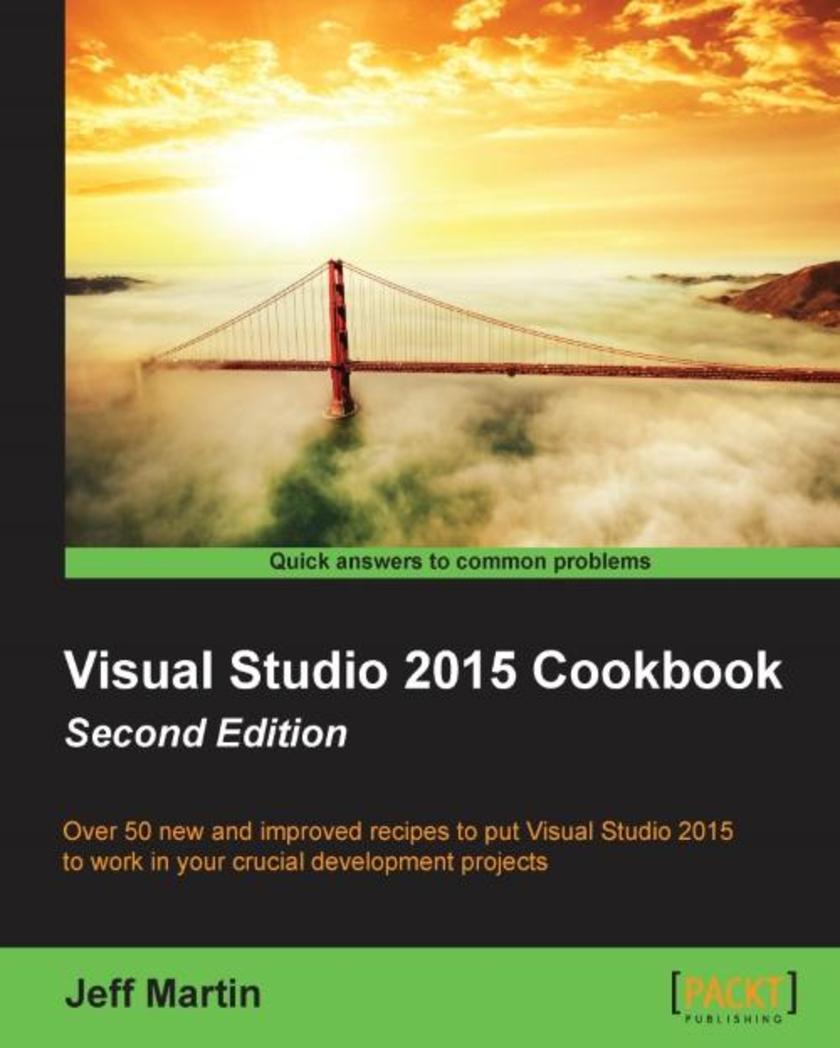
Visual Studio 2015 Cookbook - Second Edition
¥90.46
Over 50 new and improved recipes to put Visual Studio 2015 to work in your crucial development projects About This Book Get to grips with all the new Visual Studio 2015 features regardless of your preferred programming language Apply Visual Studio to all areas of development: writing, debugging, and application lifecycle maintenance Straightforward and hands-on advice for building both Windows and Android apps Who This Book Is For If you are a developer excited about the new features introduced in Visual Studio 2015, then no matter what your programming language of choice is, Visual Studio 2015 Cookbook is for you. You should have a good knowledge of working with previous versions of Visual Studio to benefit from the recipes in this book. What You Will Learn Customize the editor's new abilities to fit your development style Create apps for Windows Use Visual Studio to debug parallel and concurrent programs Integrate .NET Framework 4.6 effectively Put TypeScript to work in your web applications Develop modern C++11 with Visual Studio 2015 Protect and manage your source code with Team Foundation Server In Detail Visual Studio 2015 is the premier tool for developers targeting the Microsoft platform. Learning how to effectively use this technology can enhance your productivity while simplifying your most common tasks, allowing you more time to focus on your project. Visual Studio 2015 is packed with improvements that increase productivity, and this book walks you through each one in succession to help you smooth your workflow and get more accomplished. From customization and the interface to code snippets and debugging, the Visual Studio upgrade expands your options — and this book is your fast-track guide to getting on board quickly. Visual Studio 2015 Cookbook will introduce you to all the new areas of Visual Studio and how they can quickly be put to use to improve your everyday development tasks. With this book, you will learn not only what VS2015 offers, but what it takes to put it to work for your projects. Style and approach This book is a practical guide to using Visual Studio 2015 and will help you become familiar with the improvements made in previous versions. Each recipe provides a hands-on approach to the new features with step-by-step instructions on how to increase your productivity.




 购物车
购物车 个人中心
个人中心



